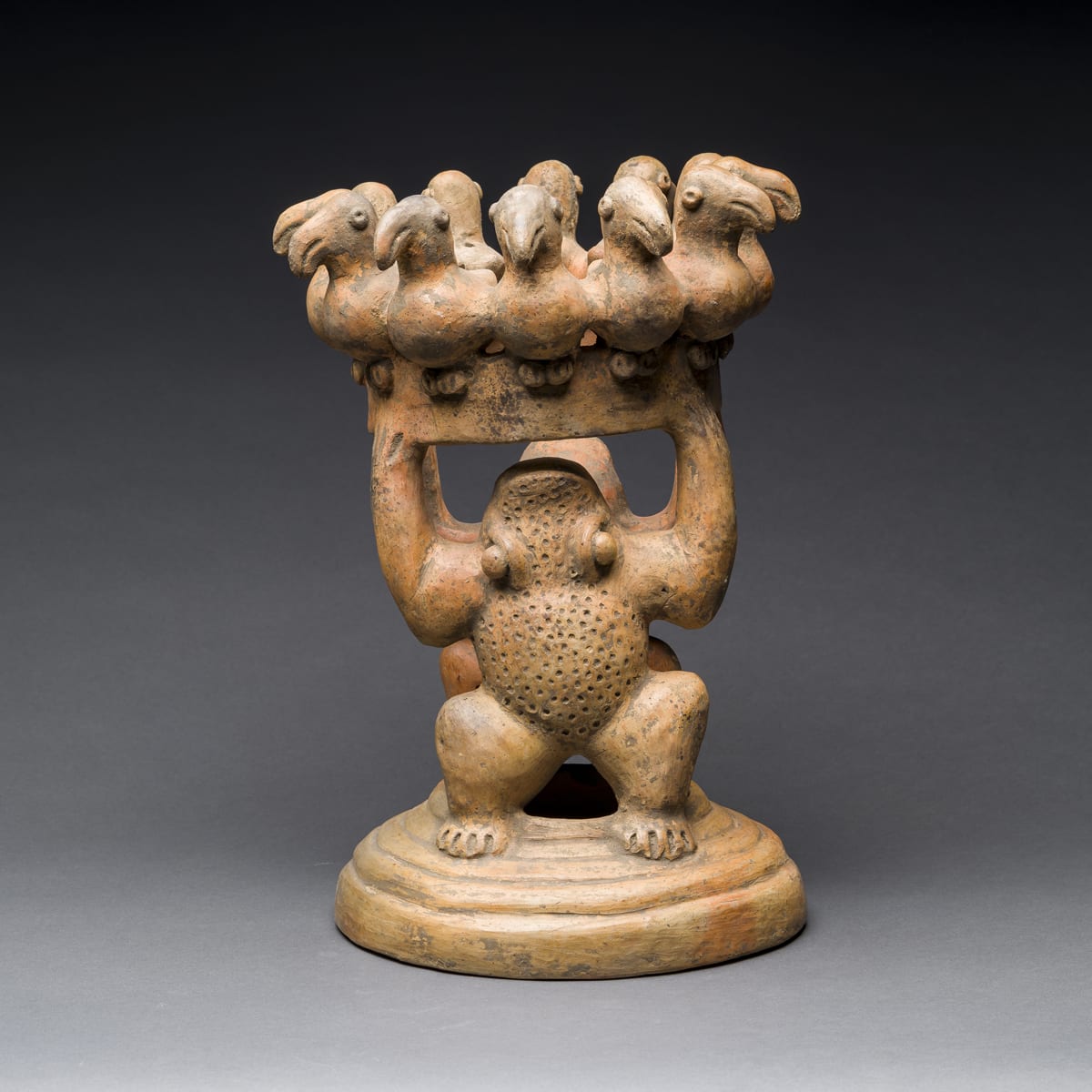Terracotta Sculpture With Frog And Bird Motifs, 300 BCE - 300 CE
Terracotta
height 32.4 cm
height 12 3/4 in
height 12 3/4 in
PF.3669
Further images
In some Meso-American cultures birds represented an iconographic motif connected with the production maize. This tradition goes back to Olmec times, and was perhaps adopted by the elite classes of...
In some Meso-American cultures birds represented an iconographic motif connected with the production maize. This tradition goes back to Olmec times, and was perhaps adopted by the elite classes of Ancient Costa Rica who controlled food production and trade routes with other regions. The circular construction of the sculpture suggests it was made as a pot stand to hold a round-bottomed vessel. Two matching frogs have their bellies pressed together as they hold the upper portion crowded with attractive birds. A concentric ring base serves as a support and provides the wonderful sense of circular motion. Each frog is carefully modeled, with their limbs well defined and their backs dotted with small holes to give the textural impression of a frog's mottled skin. Twelve nearly identical birds sit happily on a circular base surveying their surroundings vigilantly. In Olmec religion the ‘Bird Monster’ was associated with maize production, and also trance producing psychotropic substances. If this concept filtered from Mexico into Costa Rica then we may see this object as having both a politico-religious meaning, along with its functional purpose. Most importantly, it is a beautiful work of art, which doesn't need to possess historical significance to be enjoyed and treasured.
Literature
V18







